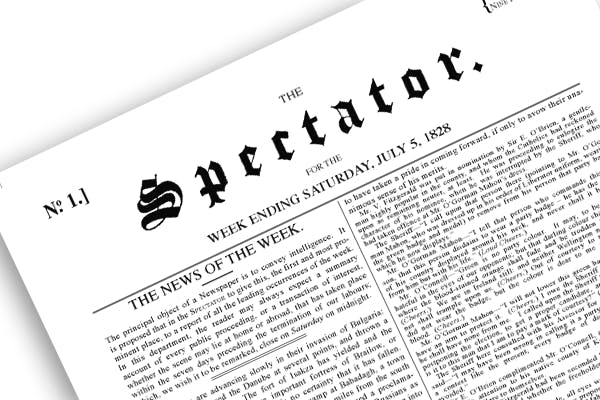Few sights are commoner in the second-hand bookshop than battered sets of the eighteenth-century Spectator. Common enough too is the misconception that these elegant octavos formed the first instalment of the magazine you are now browsing. A moment’s investigation will prove that the two are entirely distinct. Look closer, however, and the modern Spectator reveals how much inspiration it drew from its predecessor – and not just in name.
Although the original Spectator flourished so briefly, emerging on 1 March 1711 before disappearing on 6 December 1712, its influence was instant and immense. After the Bible, no prose work was as ubiquitous in Georgian libraries. The collection of 555 diurnal essays delighted readers with urbane observations on matters trivial and serious. The anonymous authors, Joseph Addison and Richard Steele, had evolved from schoolboy friends into literary peers. Always varied and inventive, they wrote with flair and vigour on morals, manners, philosophy and literature.

Britain’s best politics newsletters
You get two free articles each week when you sign up to The Spectator’s emails.
Already a subscriber? Log in






Comments
Join the debate for just £1 a month
Be part of the conversation with other Spectator readers by getting your first three months for £3.
UNLOCK ACCESS Just £1 a monthAlready a subscriber? Log in